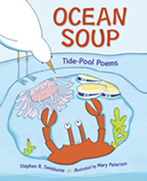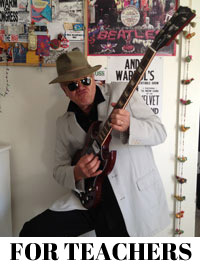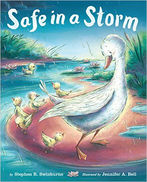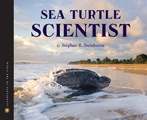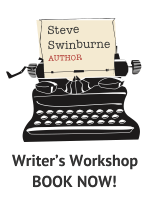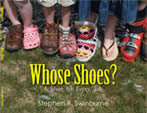Steve Swinburne
Children’s Book Author and School Visits
In Good Hands - for teachers
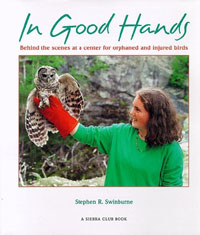
Behind the Scenes at a Center for Orphaned and Injured Birds
Photographs by Steve Swinburne.
Published by Sierra Club Books, 1998
Hardcover 0-87156-397-5
Book description
With their piercing eyes and powerful wings, raptors – hawks, eagles, owls, and other birds of prey – command humans’ respect and awe. Yet because of people’s carelessness, along with everyday perils of field and forest, these magnificent birds are sometimes injured or orphaned. Those fortunate enough to be found near the Vermont Raptor Center – and other places like it around the country – get expert help. In the capable and caring hands of volunteers such as young Hannah Regier, many of these birds are nursed back to health and eventually released.
In this engaging photo essay, author-photographer Stephen R. Swinburne takes readers behind the scenes at the center. Through Hannah’s eyes, readers will gain a new appreciation for these fascinating birds and will share her quiet satisfaction when they are able to return to the wild.
How I was inspired:
As a naturalist, I was curious about a place that cares for injured birds less than an hour by car from where I live. I visited the Raptor Center at the Vermont Institute of Natural Science many times and spent a lot of time looking at beautiful birds of prey such as snowy owls, bald eagles and peregrine falcons. I eventually developed the idea for IN GOOD HANDS, a book that takes readers behind the scenes of a raptor rehabilitation center.
Book Features
- Full-color photographs of fascinating birds of prey
- List of all North American raptors
- Factual sidebars about birds of prey including “Equipped for Hunting;” “Owl’s Amazing Hearing;” “Top of the Food Chain;” “Bird Banding.”
Classroom Connections
History and Social Studies
- Imagine you’re a chicken farmer in the 1950’s. Describe how you feel about having hawks and owls around your farm.
- Falconry is a sport that dates back thousands of years. Describe its history.
Science and Math
- Write a brief report about bird banding. Create a graph showing the number of birds banded since banding began in 1920.
Language Arts
- From the owl’s viewpoint, write the story of its rescue, rehabilitation and release to the world.
- Write a poem using at least 10 names of North American raptors.
- Imagine you’re the New York Times book reviewer. Write a review of IN GOOD HANDS.
Other Ideas
- Play a predator-prey game. Pretend half the class is predators, the other half, prey. What adaptations do predators have for hunting? What adaptations do prey species have to escape from being hunted? Chart student responses.
- Listen to a tape of owls hooting. Practice hooting. Gather at night for an owl walk. Play the owl tape and try hooting to see if you can attract a real owl. How many owl calls can you make?
- Visit a nearby raptor center and write a report about your trip.
- Using the library and the Internet as research tools, find out how many birds of prey in the United States are threatened or endangered. Write a report of your findings.
- Create a food chain of a meadow or park nearby your school; of the ocean; of the desert; of the rainforest.
- Test your memory. Study the list of raptors on page 8. How many raptors do you know?
- Draw pictures of hawks, eagles, owls and falcons. Cut them out and hang them from dowels or coat hangers to make hawk mobiles.
- Take a walk near your school and make a list of all the birds you can see.
- Make a chart that shows where the raptors fit into the food chain.
